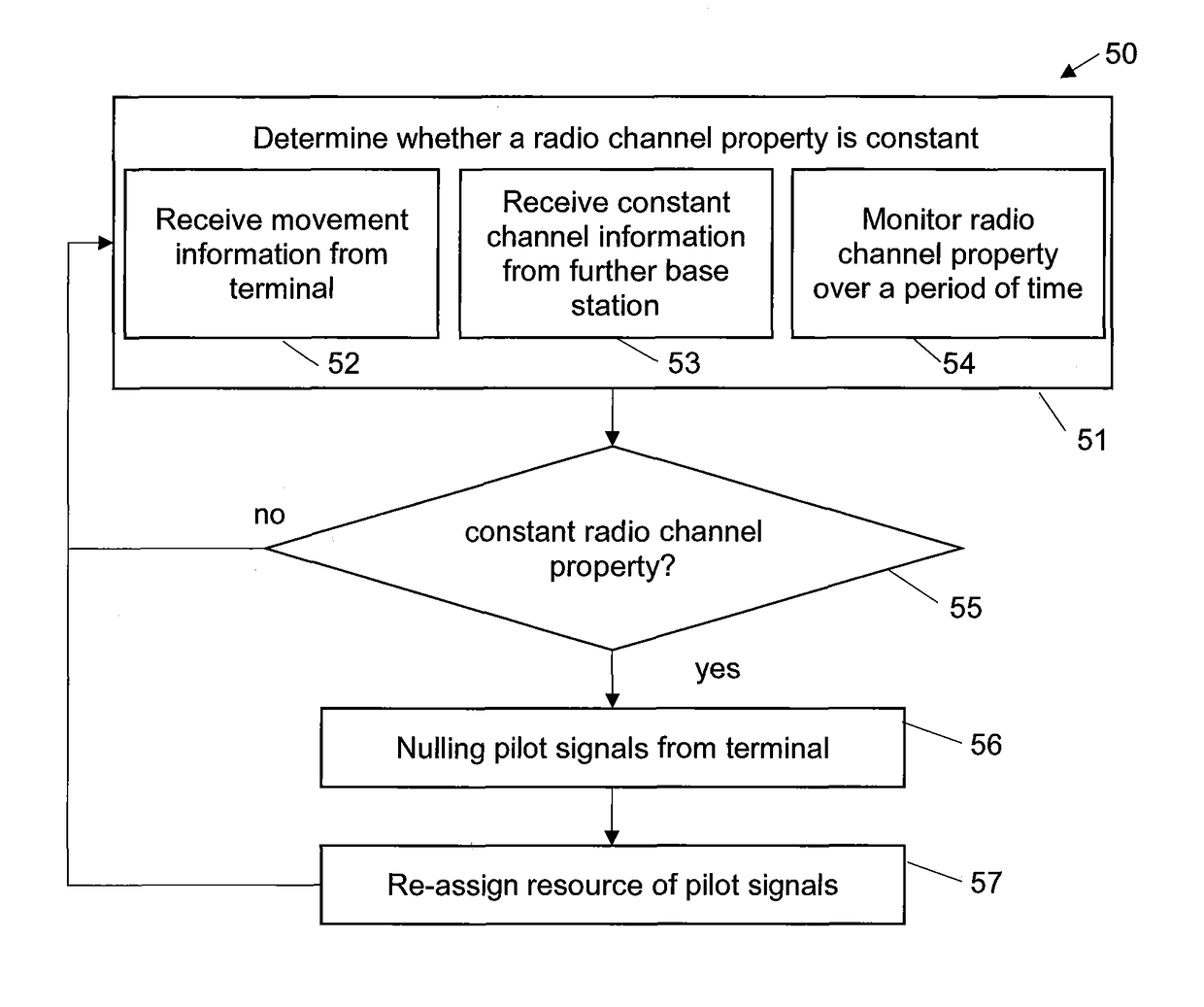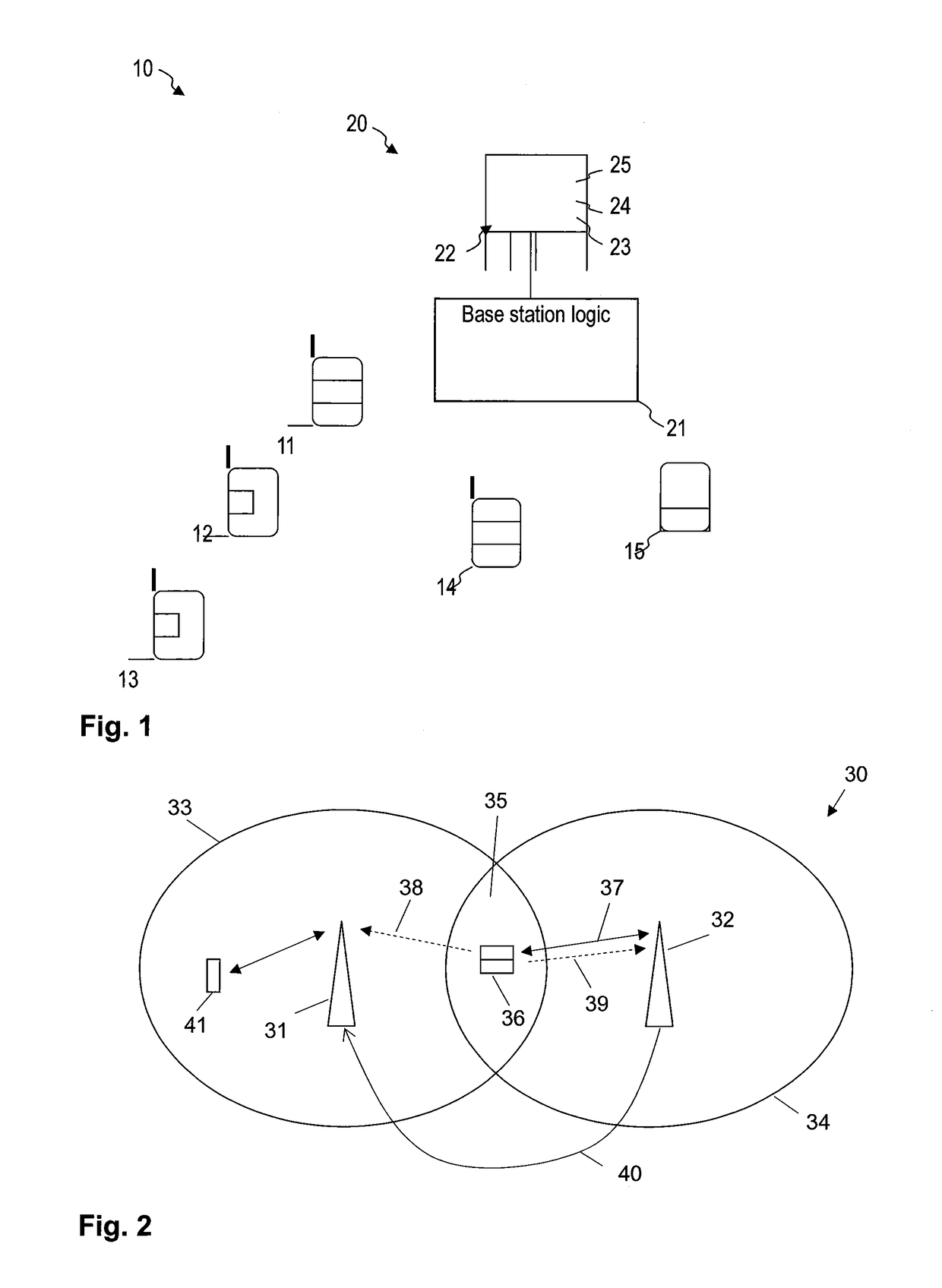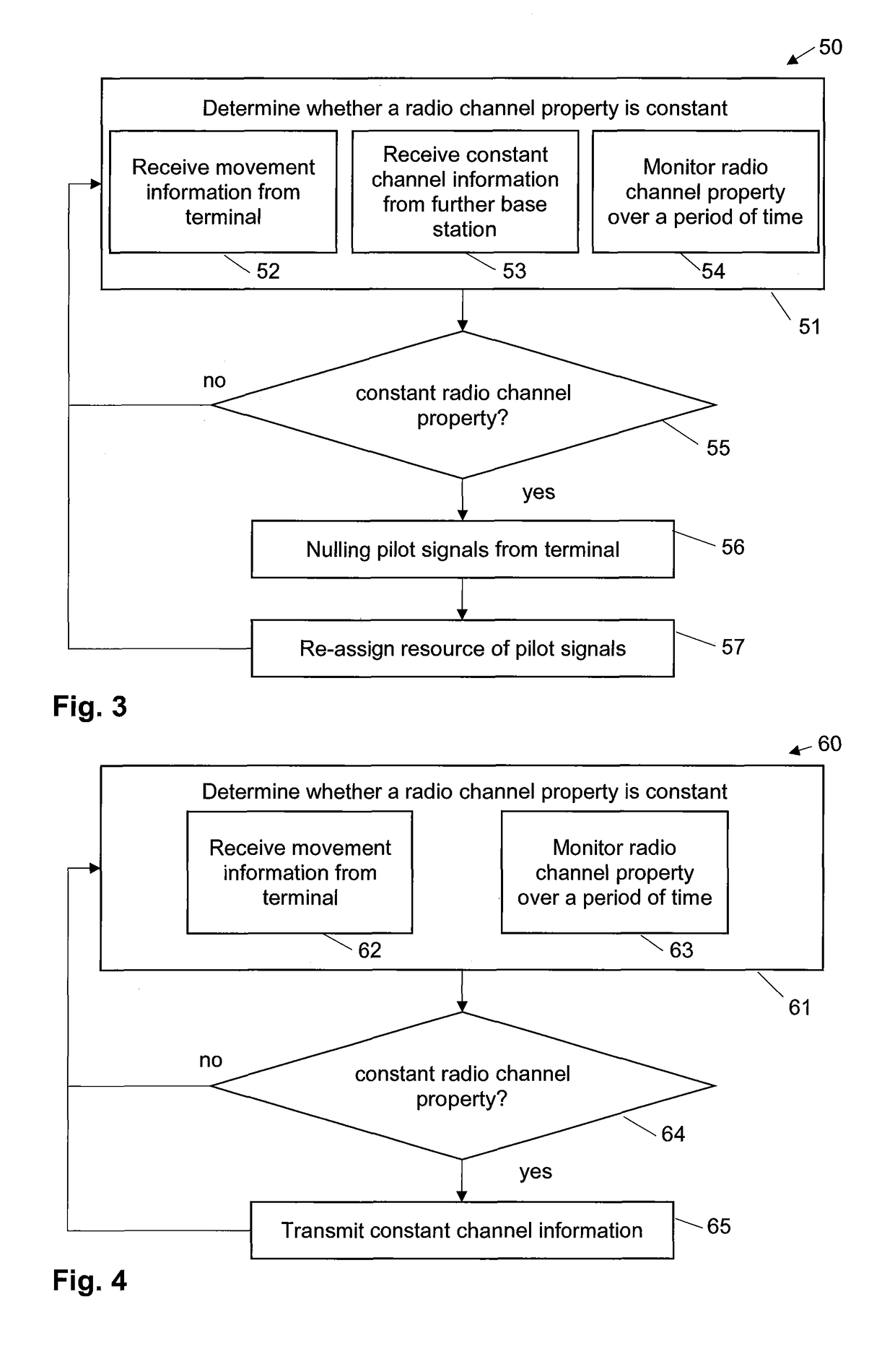Pilot resource allocation for a MIMO system
a pilot signal and resource allocation technology, applied in diversity/multi-antenna systems, transmission path sub-channel allocation, wireless communication, etc., can solve the problems of increasing pilot signalling time, affecting the transmission of payload data, so as to facilitate implementation and enhance reception sensitivity and quality
- Summary
- Abstract
- Description
- Claims
- Application Information
AI Technical Summary
Benefits of technology
Problems solved by technology
Method used
Image
Examples
Embodiment Construction
[0039]In the following, exemplary embodiments of the present invention will be described in more detail. It is to be understood that the features of the various exemplary embodiments described herein may be combined with each other unless specifically noted otherwise. Same reference signs in the various drawings refer to similar or identical components. Any coupling between components or devices shown in the figures may be a direct or indirect coupling unless specifically noted otherwise.
[0040]FIG. 1 shows a communication system 10 according to an embodiment. The communication system 10 is a multiple-input and multiple-output (MIMO) system and includes a MIMO base station 20 according to an embodiment. The MIMO communication system 10 may be a massive MIMO system (MaMi), and the MIMO base station may have a large number of antennas, for example several tens or in excess of one hundred antennas.
[0041]The base station 20 comprises a plurality of antennas 22. The antennas 23-25 may be ...
PUM
 Login to View More
Login to View More Abstract
Description
Claims
Application Information
 Login to View More
Login to View More - R&D
- Intellectual Property
- Life Sciences
- Materials
- Tech Scout
- Unparalleled Data Quality
- Higher Quality Content
- 60% Fewer Hallucinations
Browse by: Latest US Patents, China's latest patents, Technical Efficacy Thesaurus, Application Domain, Technology Topic, Popular Technical Reports.
© 2025 PatSnap. All rights reserved.Legal|Privacy policy|Modern Slavery Act Transparency Statement|Sitemap|About US| Contact US: help@patsnap.com



